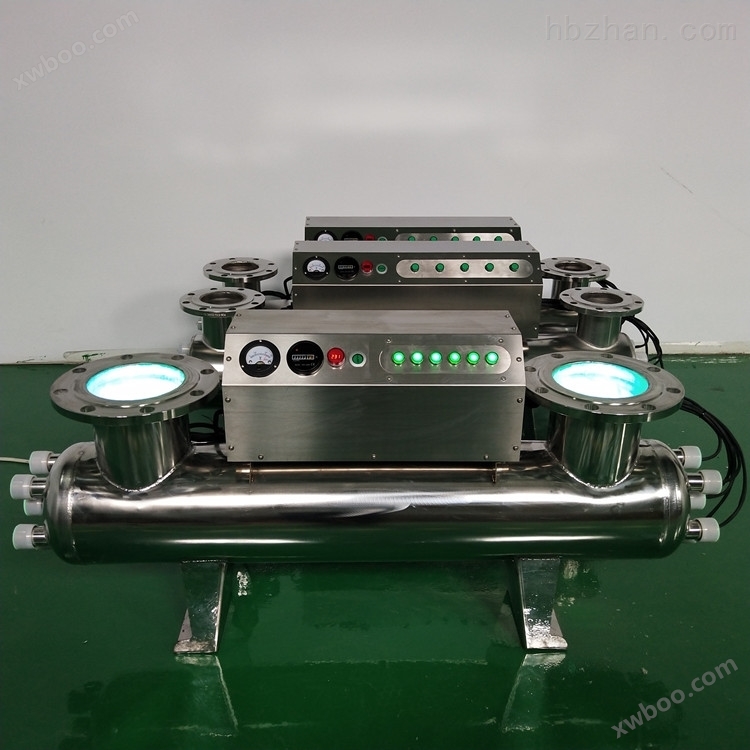Overflow ultraviolet disinfection equipment
Overflow ultraviolet disinfection equipment

A brief introduction to UV sterilizers:
The electrical control box is installed near the device, with a relative humidity of no more than 80 ℃, no corrosive gases, no conductive dust, and no strong vibrations or impacts. This product is a pipeline type, with two water outlets that can be selected as either the inlet or the outlet according to the direction of the pipeline. It can be placed according to the user's needs. After installing the product, first conduct a water test to ensure no water leakage. Then turn on the power and confirm that the light tube is on for 3-5 minutes. First, open the water valve, and then open the water inlet valve. At this point, the machine starts running.
Open the protective covers on both sides of the sterilizer, remove the lamp tube, remove the screw caps on both ends, remove the sealing rings on both ends, and slowly extract the quartz tube. After cleaning with alcohol, the operator should not directly touch the surface of the quartz tube with their hands to avoid dirtying and affecting transparency. Insert the sealing hole at the opposite end of the quartz tube horizontally, with equal clearance at both ends. Insert the sealing ring and slowly and evenly tighten the screw cap. The force should not be too strong to prevent the quartz tube from breaking. Then conduct a water test. If there is water leakage, gently tighten the screw cap until there is no water leakage. Install the lamp tube after 5. If the quartz tube is too dirty, it will affect the UV transmittance, so it needs to be cleaned regularly. To disassemble the quartz tube, turn off the power first.
Its acid resistance is 30 times that of ceramics and 150 times that of stainless steel, and its chemical stability at high temperatures is unparalleled by any other engineering material. Physical properties: Good thermal stability. Quartz glass has a very small coefficient of thermal expansion and can withstand drastic temperature changes. When heated to around 1100 ℃, it will not explode even when placed in warm water. Quartz glass has good transparency in the entire spectral range from ultraviolet to infrared, with a visible light transmittance of over 93%, especially in the ultraviolet spectral region where the maximum transmittance can reach over 80%.
This is because quartz tubes can withstand high temperatures of around 1250 ℃ and become very soft and sticky above 1800 ℃, allowing them to be shaped as needed. On the other hand, due to the use of high-grade crystal stone as the raw material for quartz tubes, which has high purity and contains very few harmful impurities, it can ensure quality for diffusion, alloy preparation, etc. Therefore, closed tube diffusion often uses quartz tubes. Chemical properties: The softening point temperature of high-temperature resistant quartz glass is about 1730 ℃, and it can be used for a long time at 1100 ℃. The highest temperature for short-term use can reach 1450 ℃. Excluding corrosion resistance.


